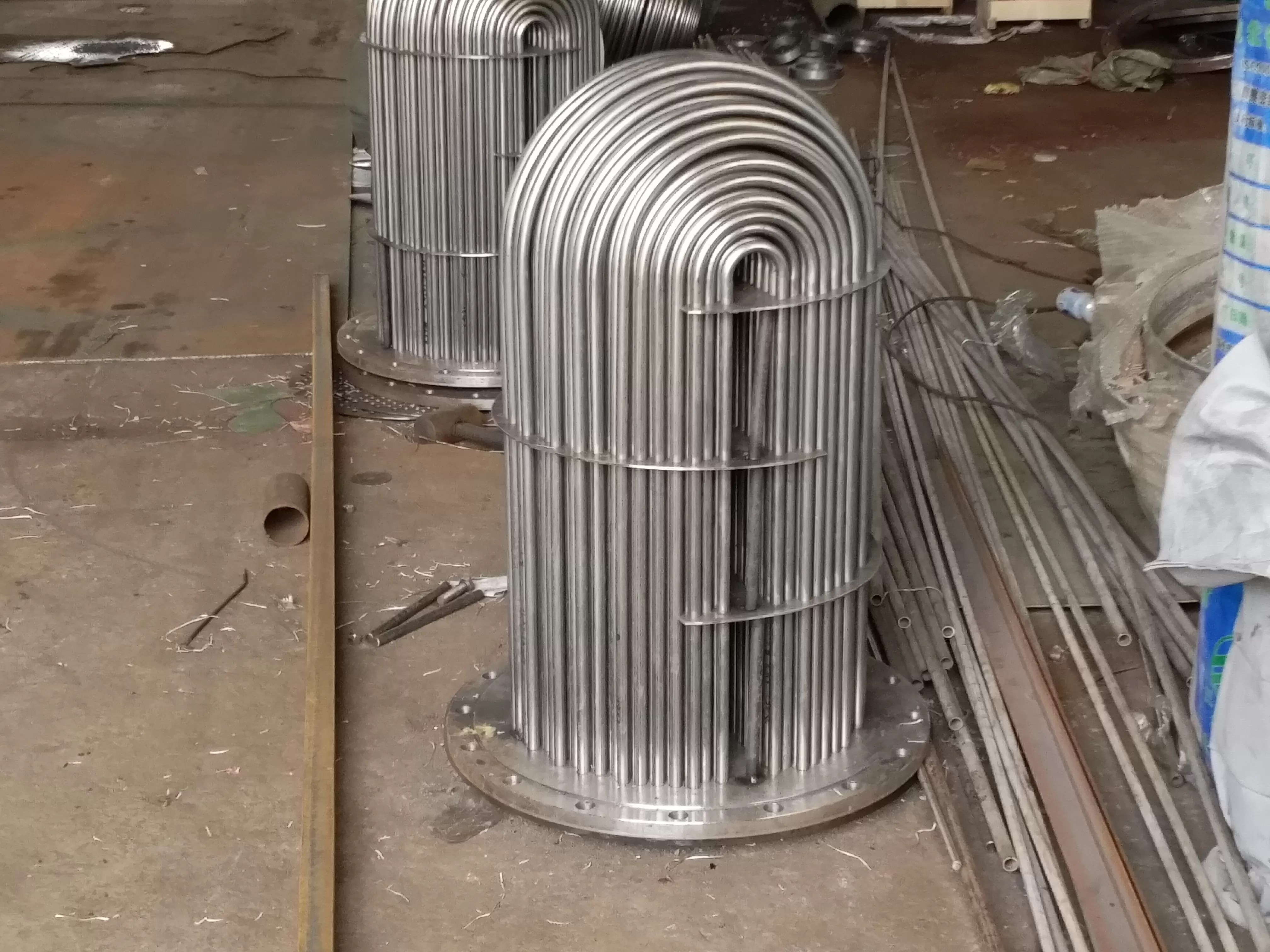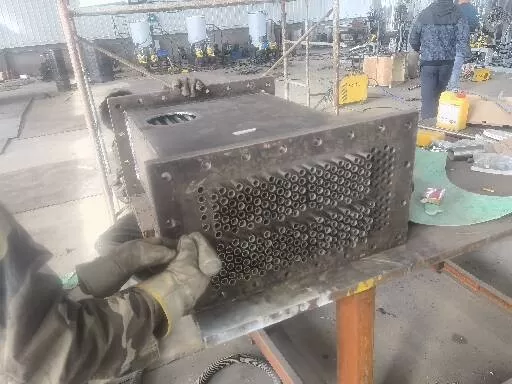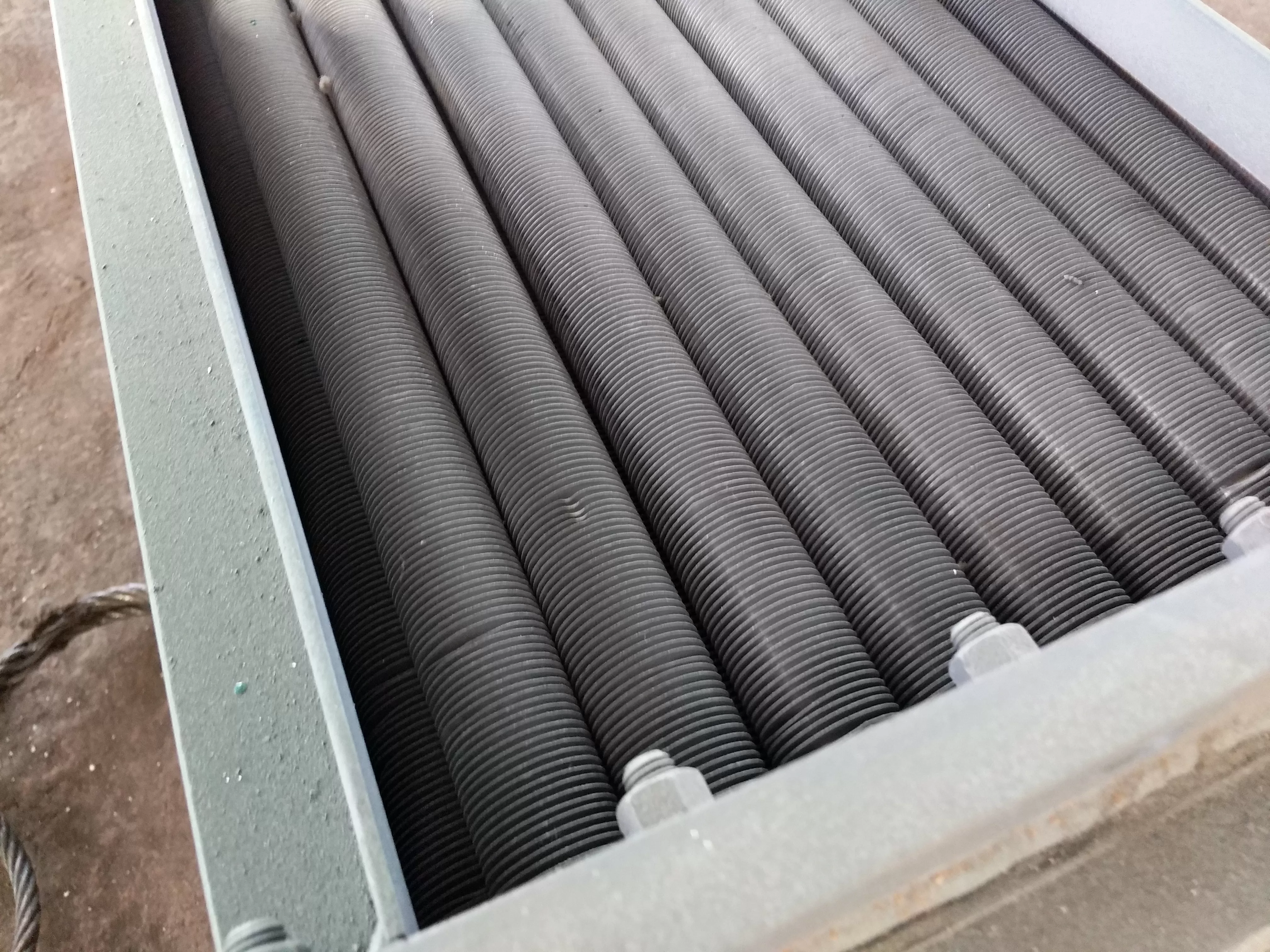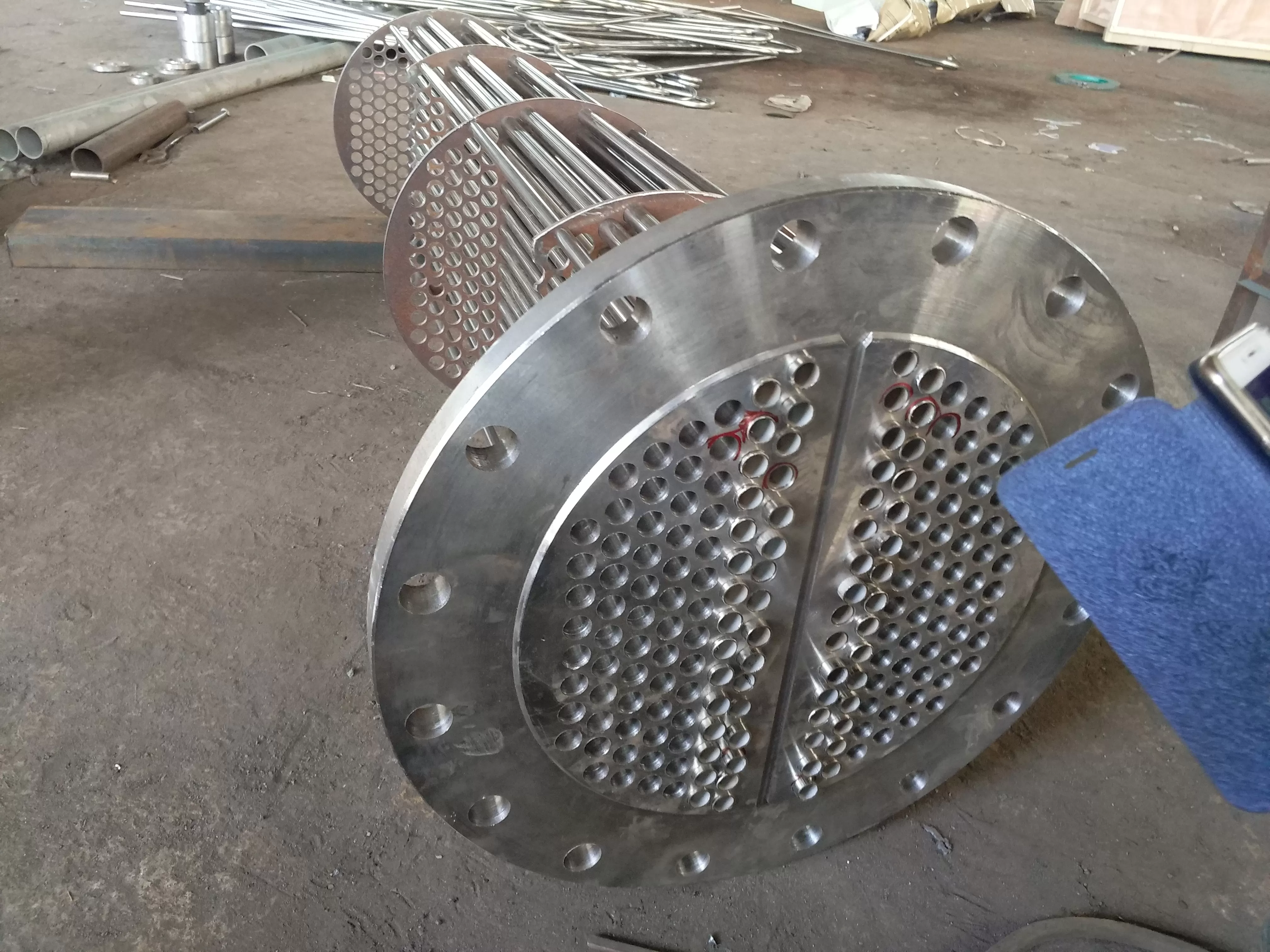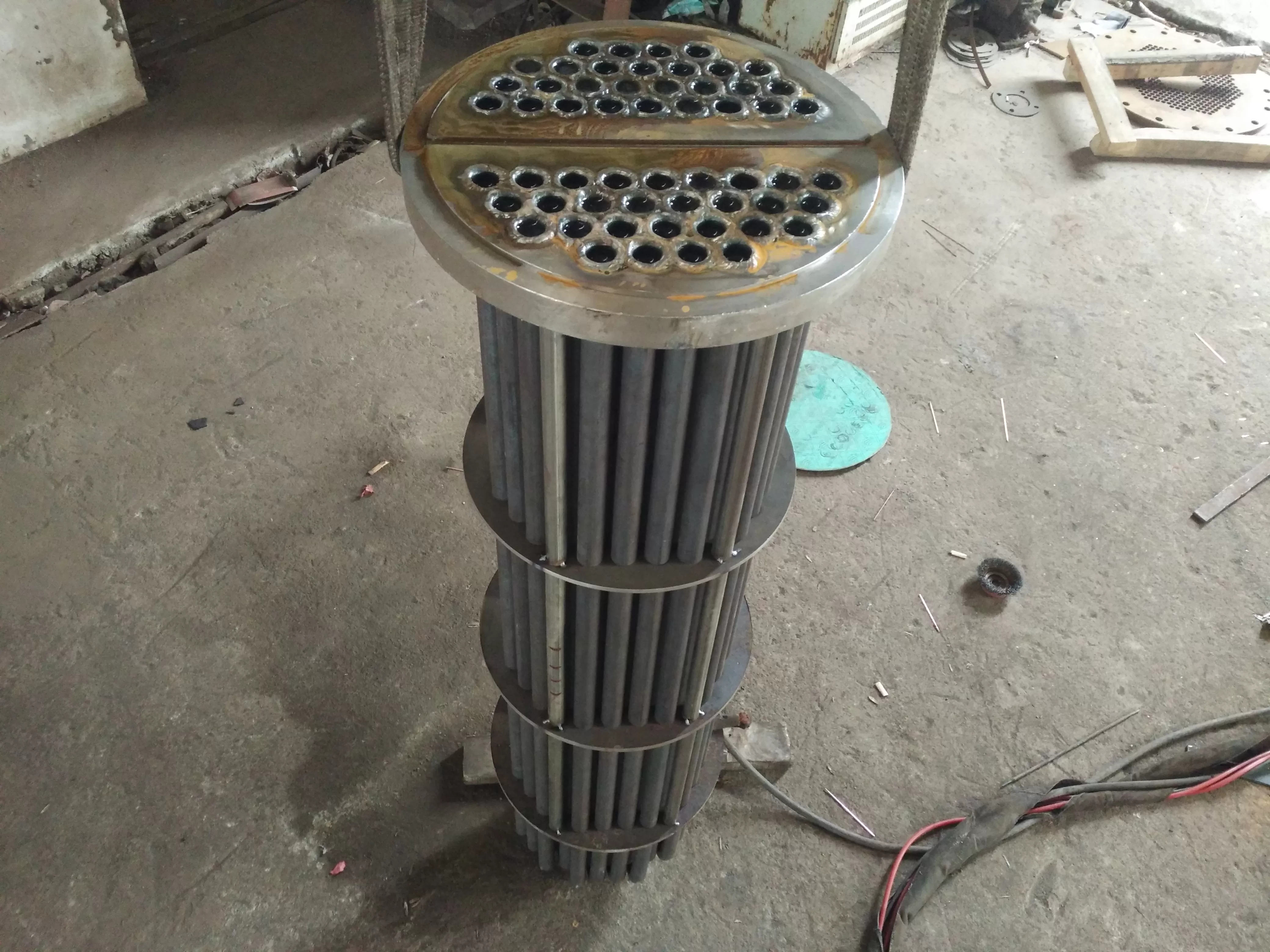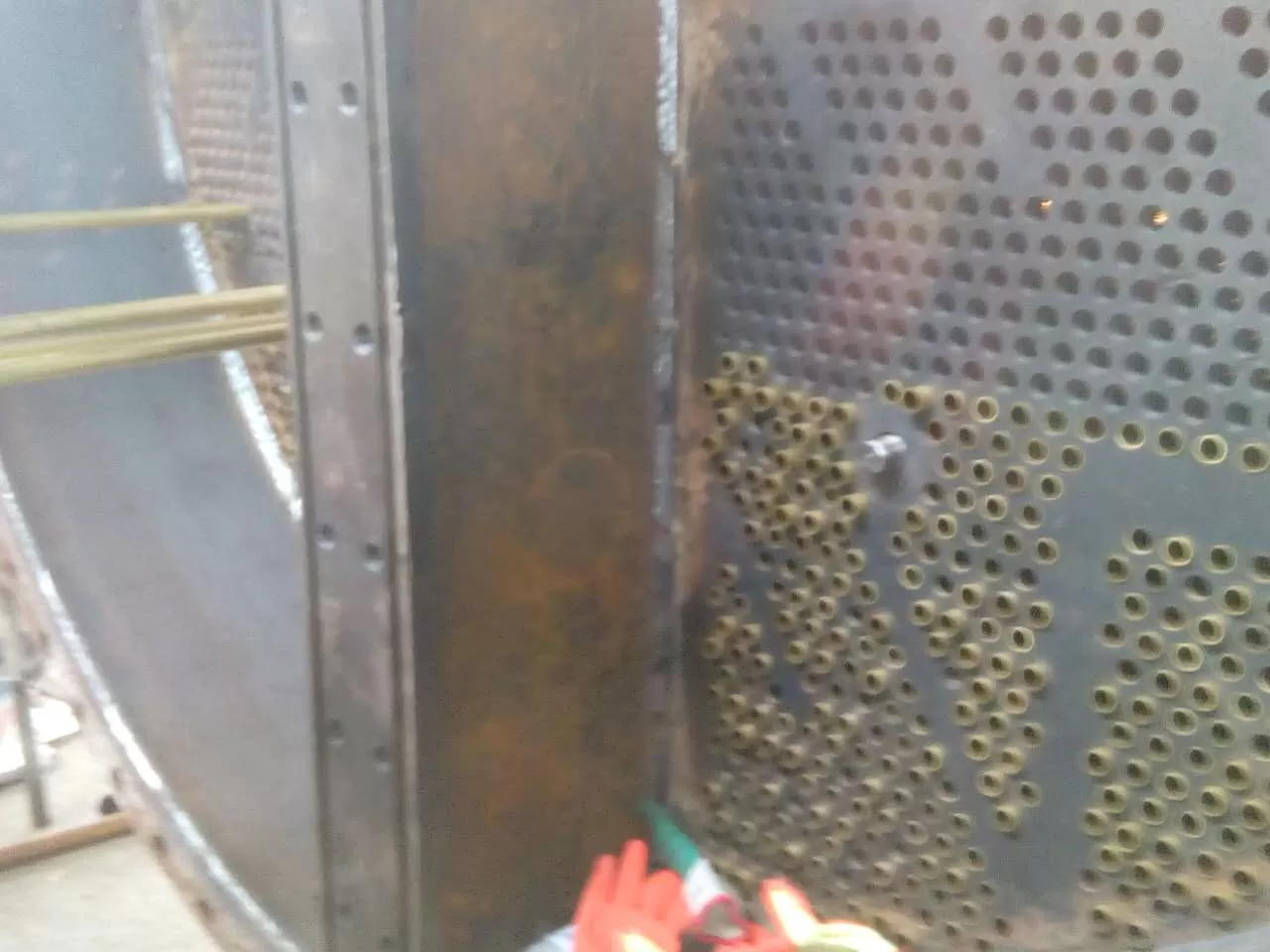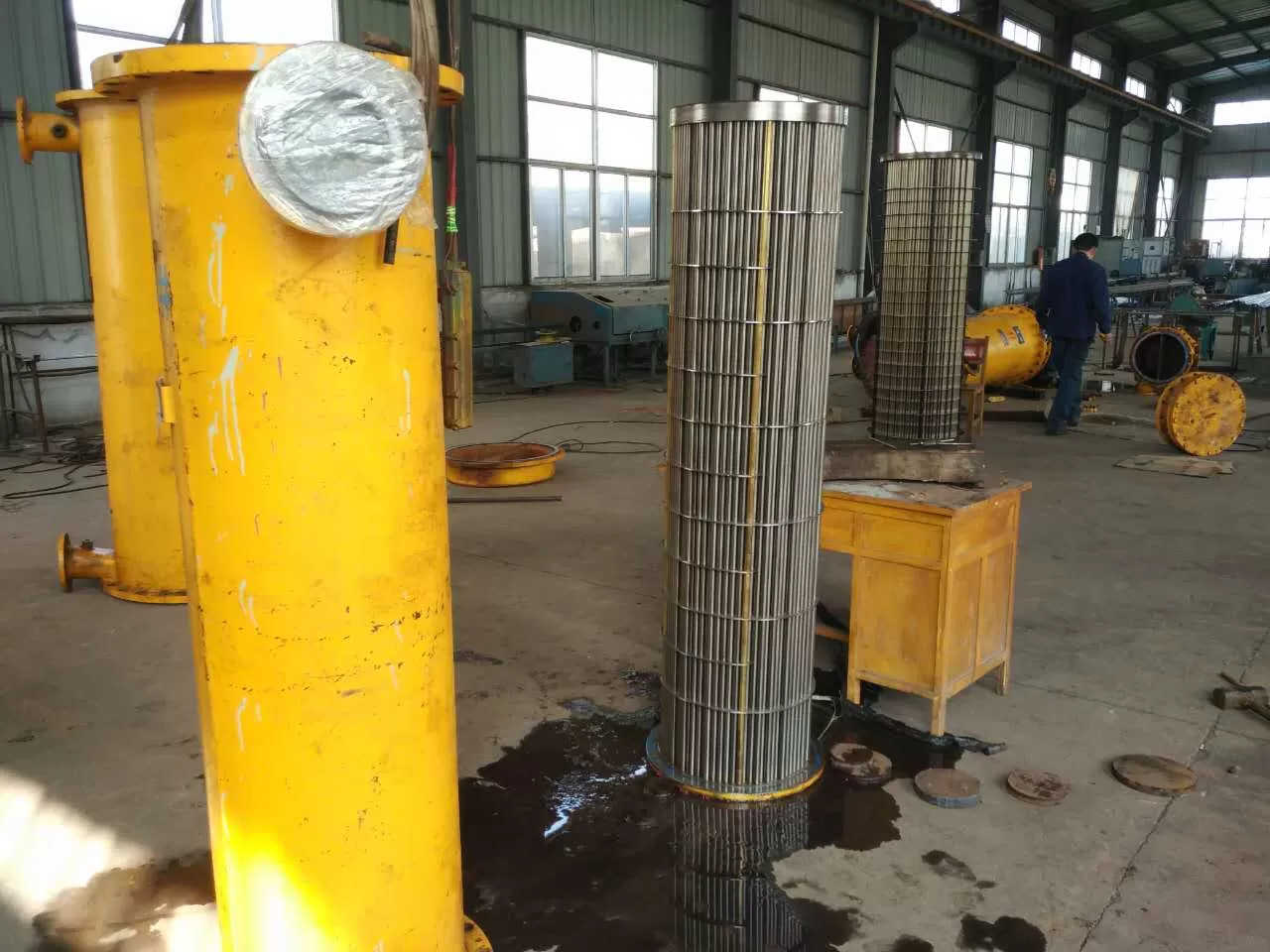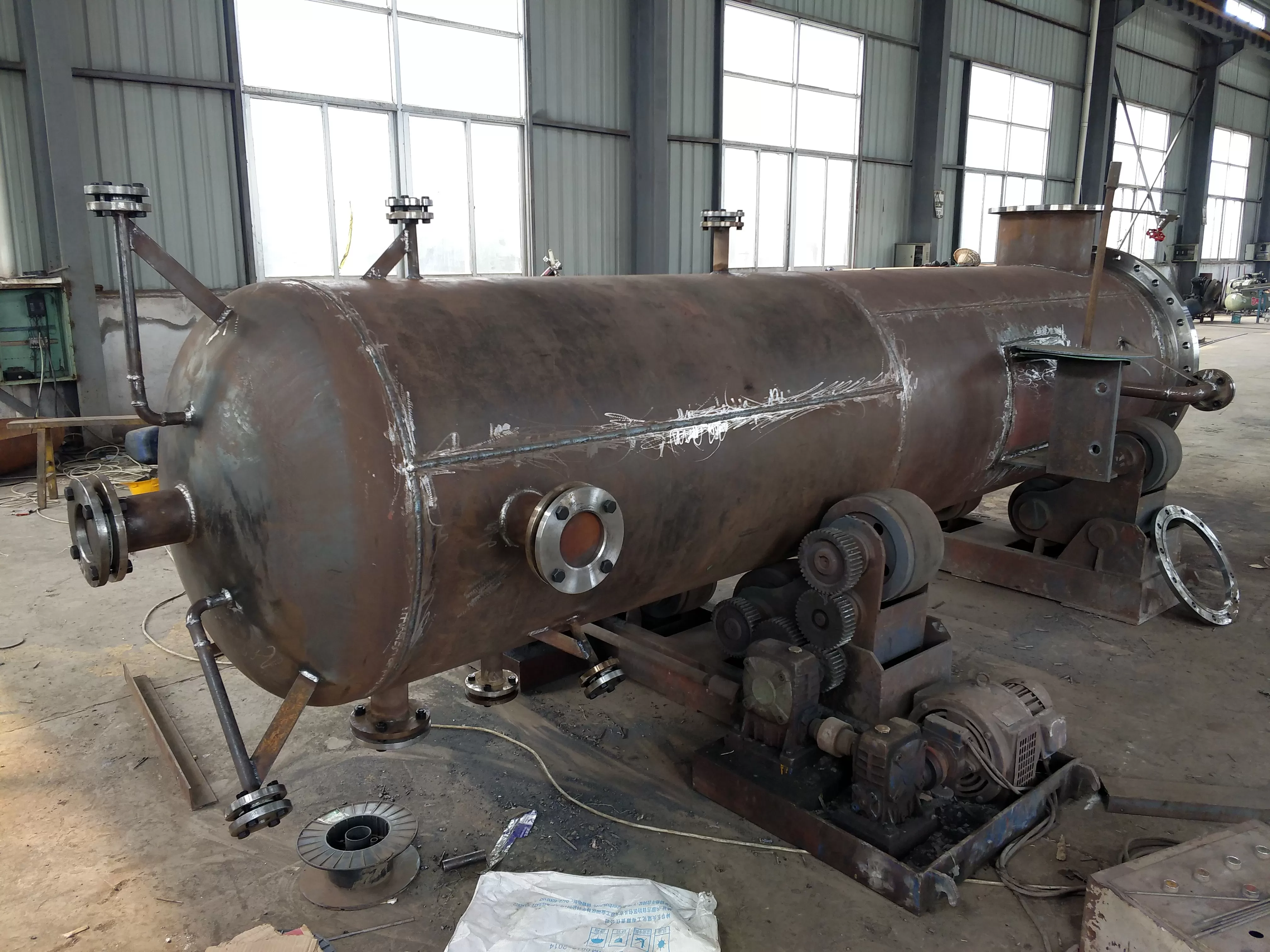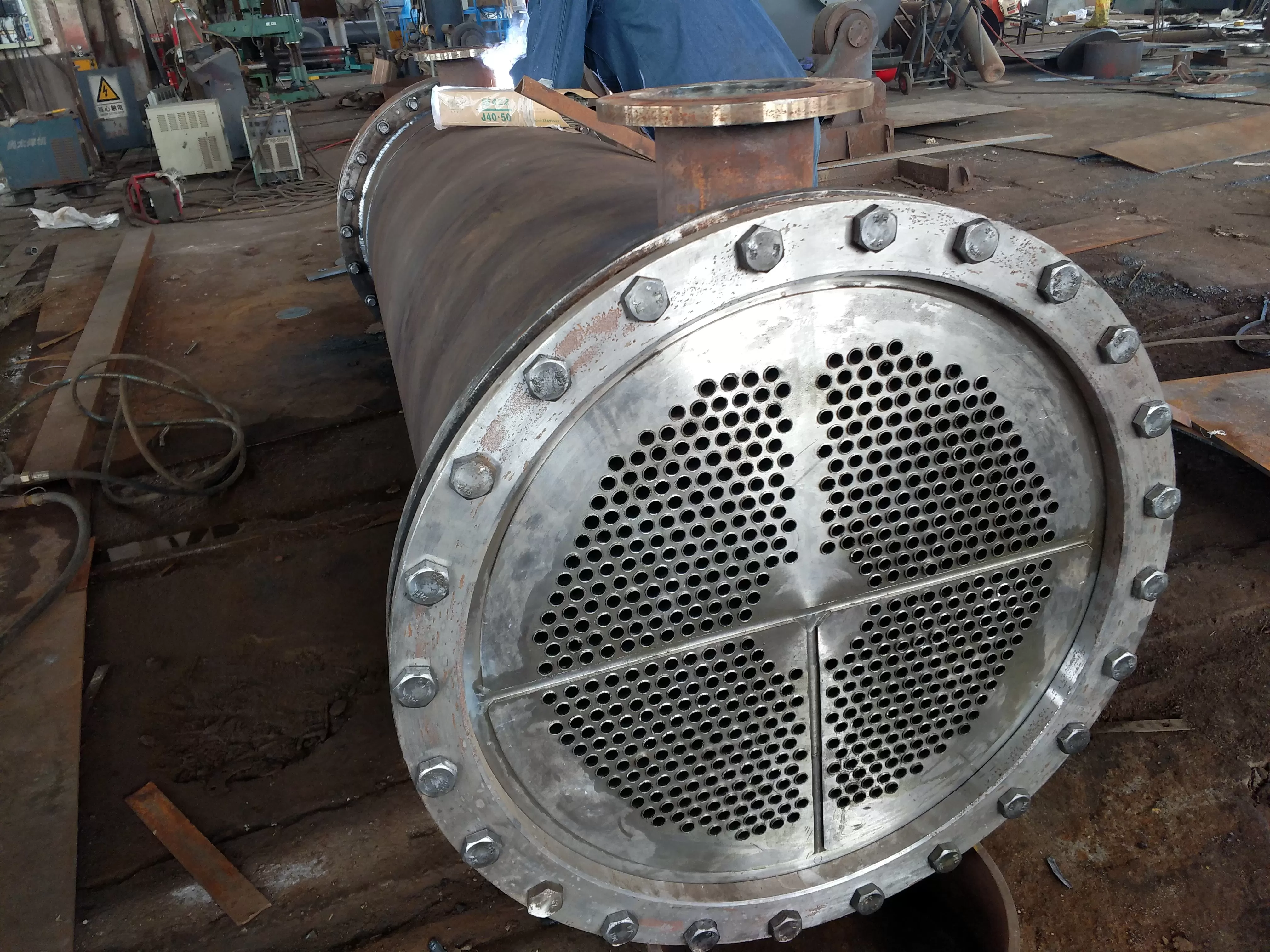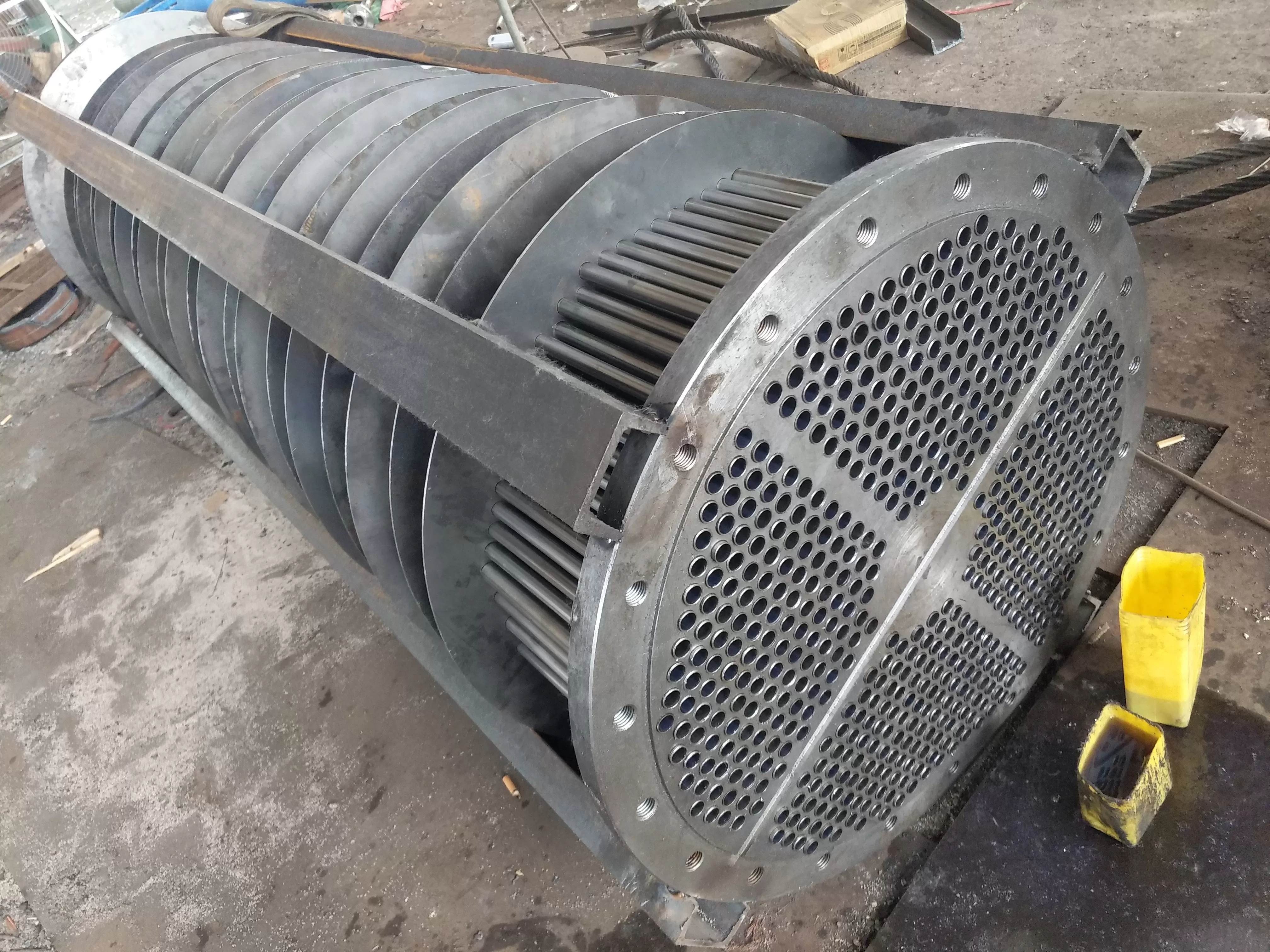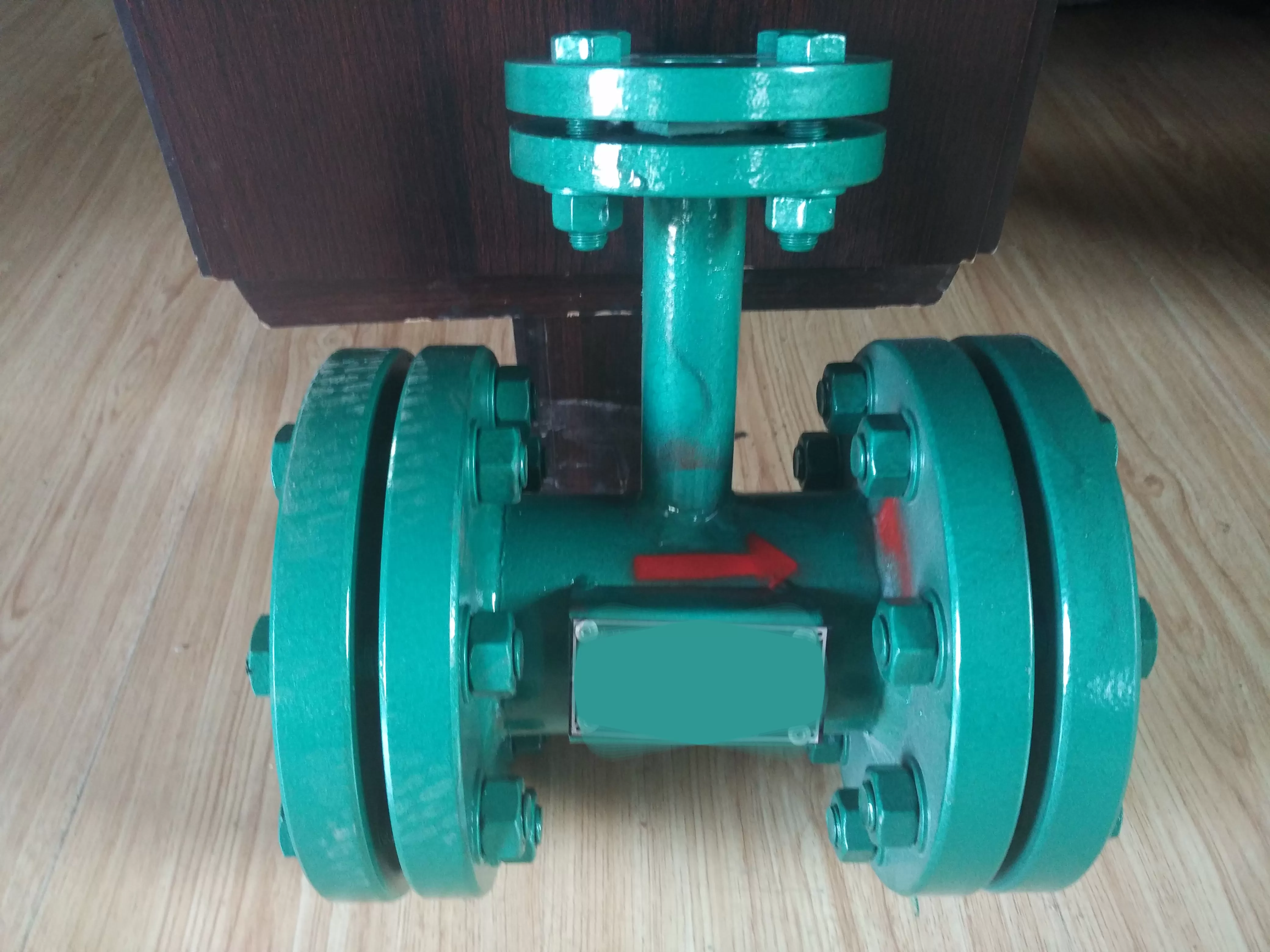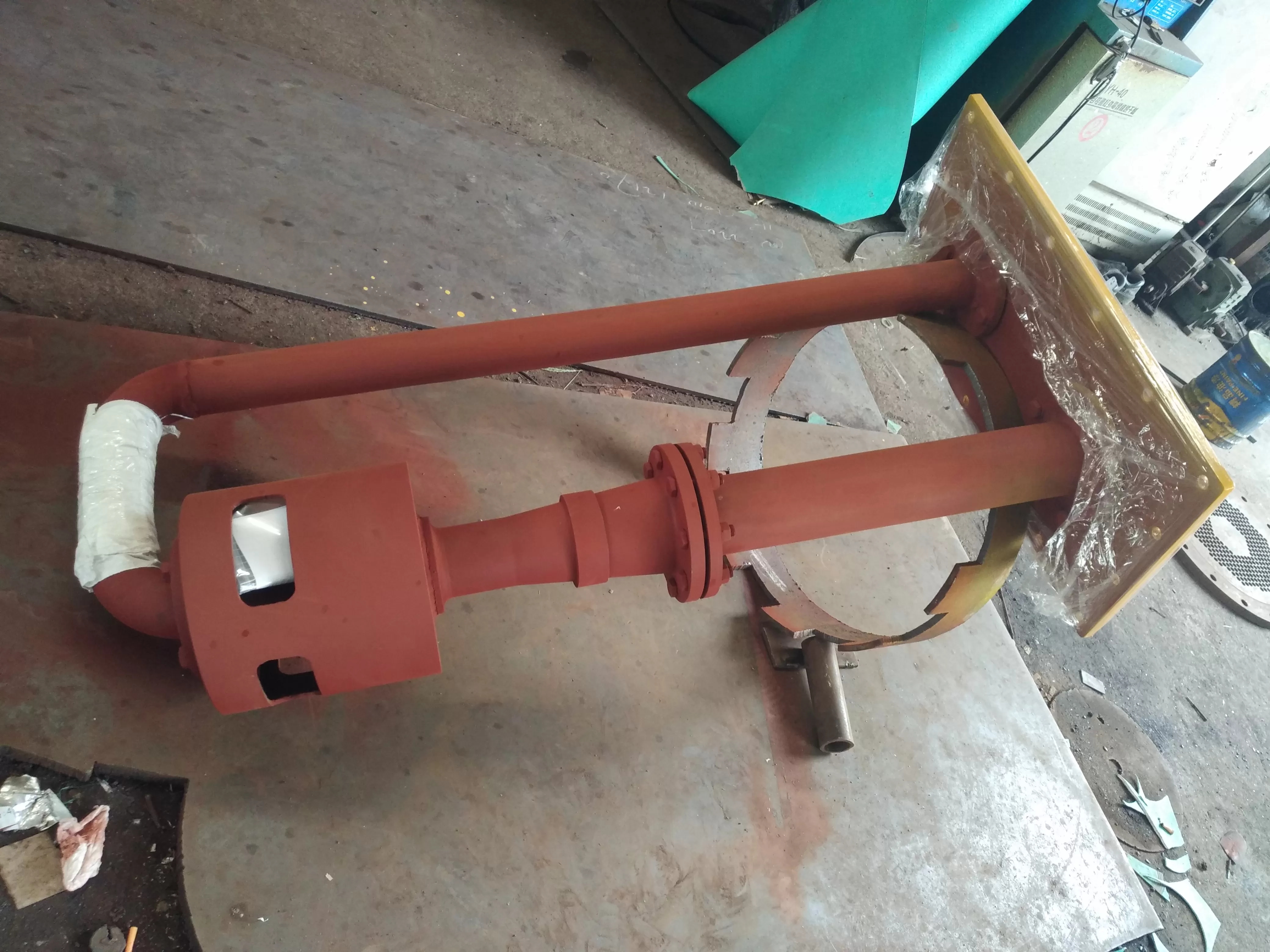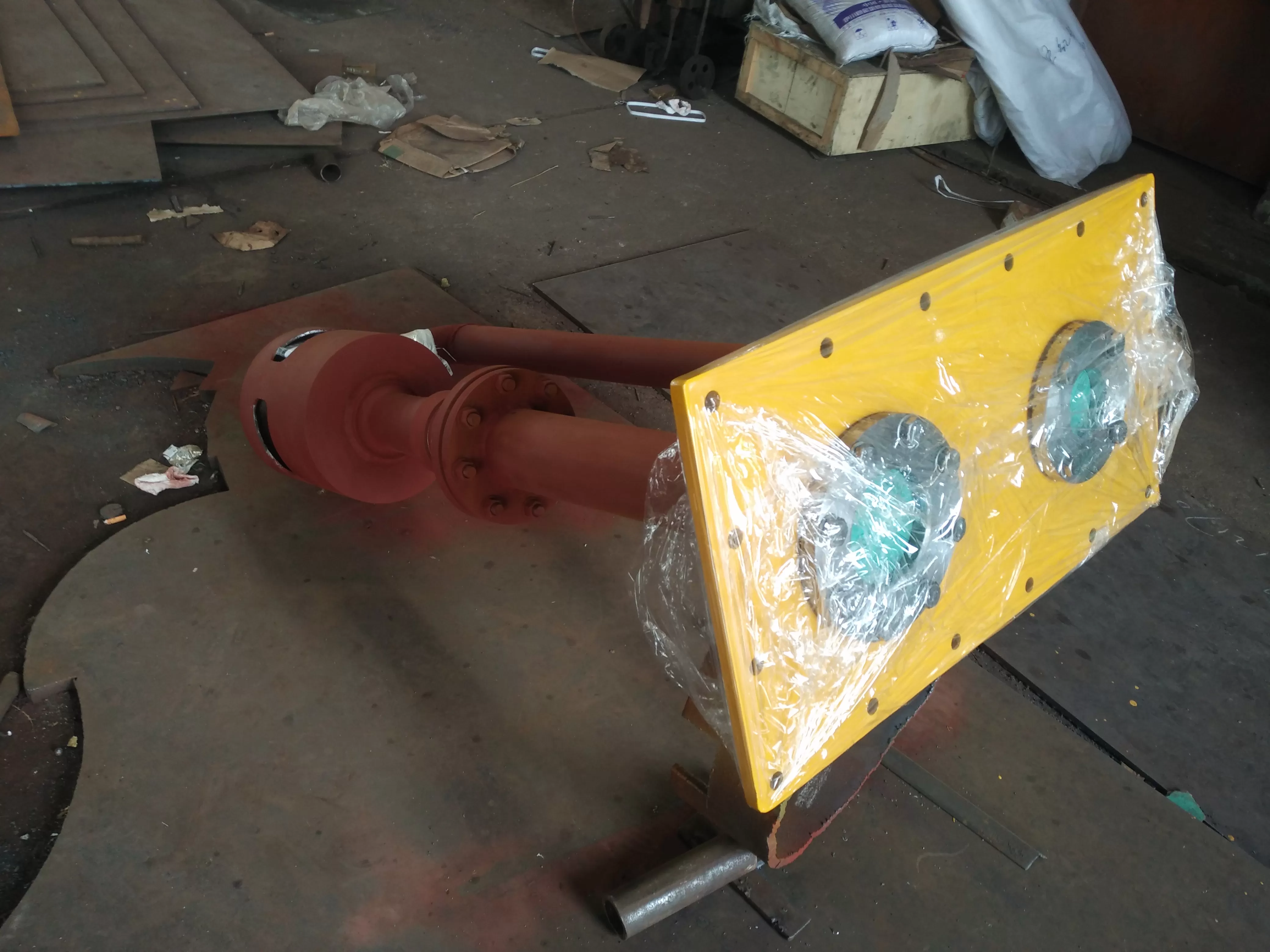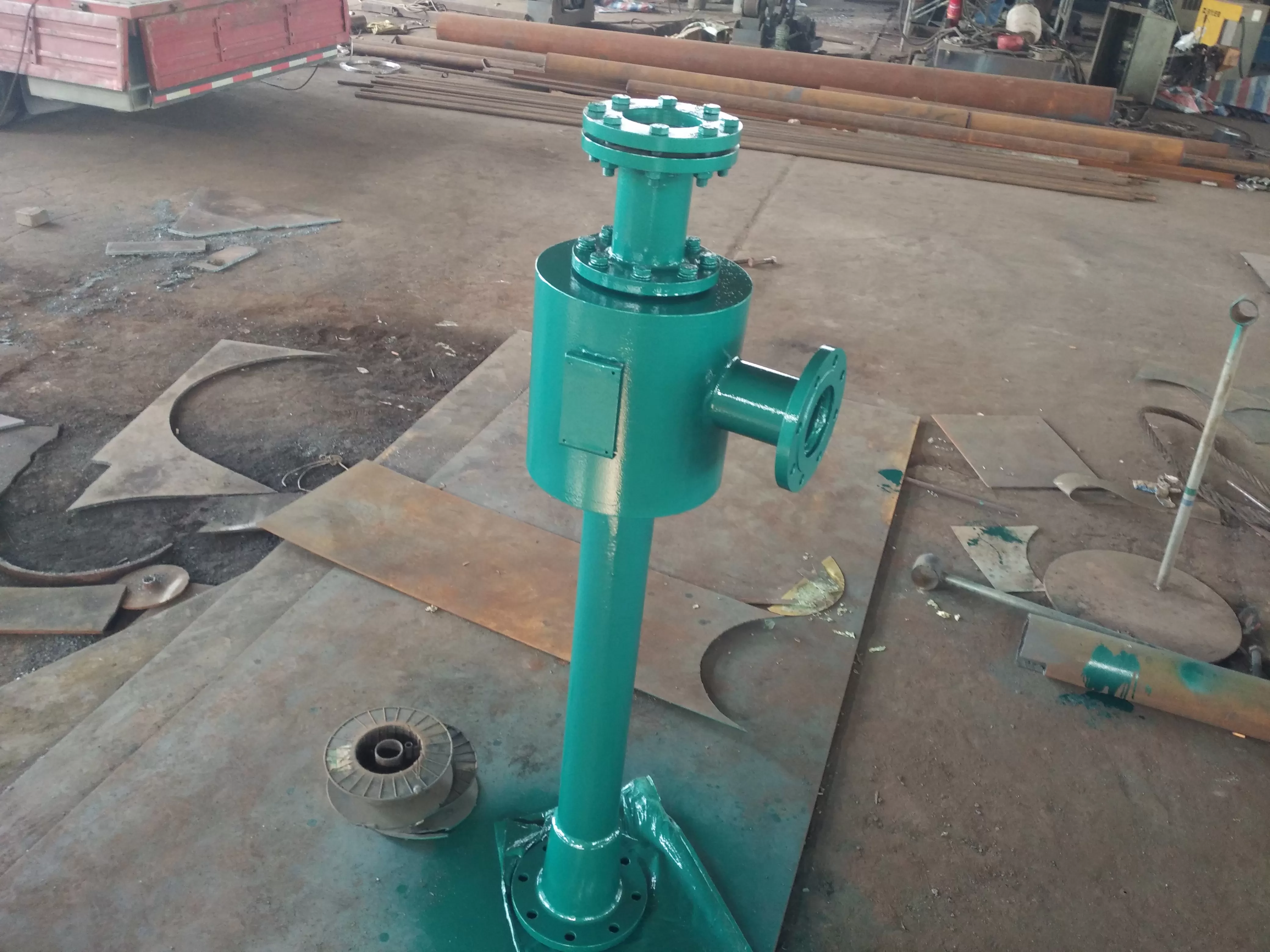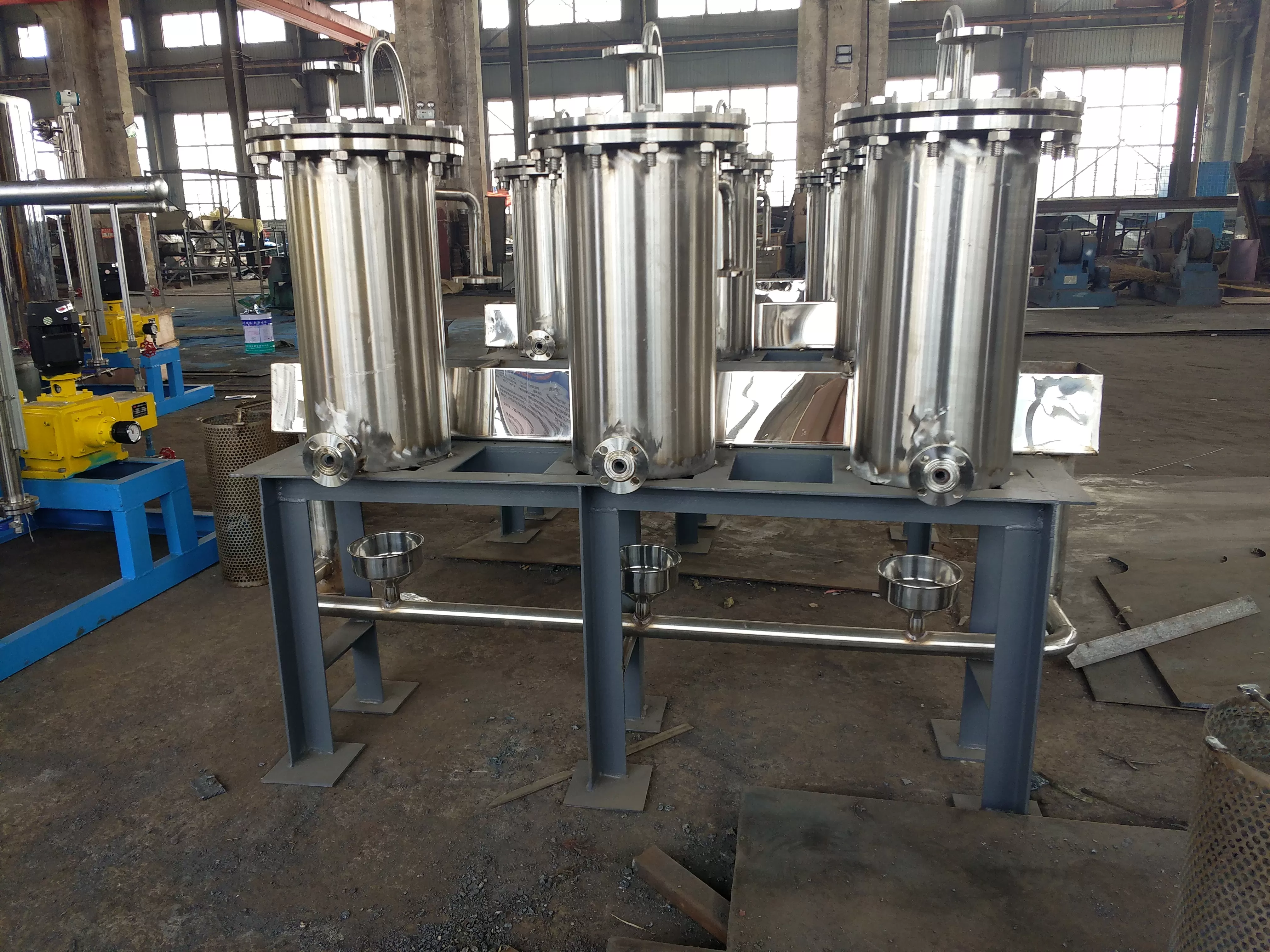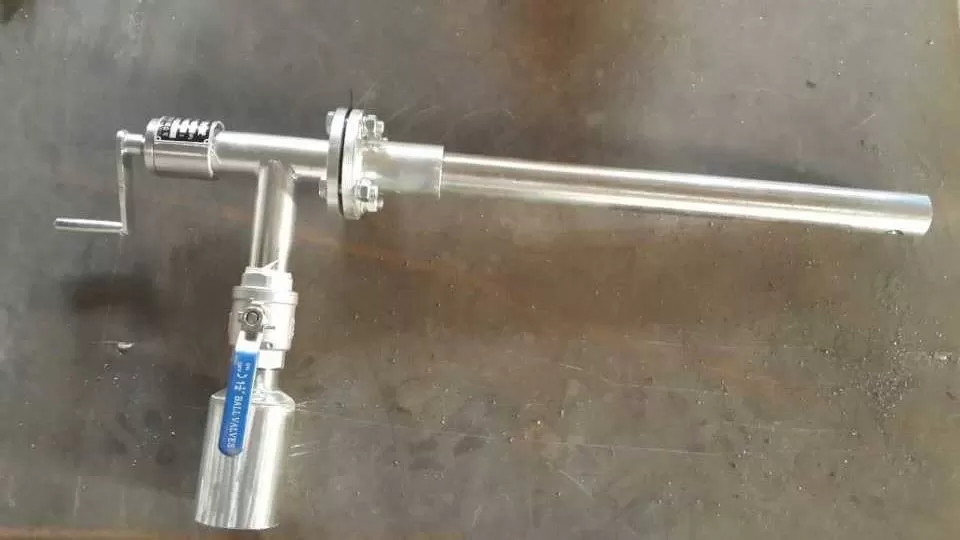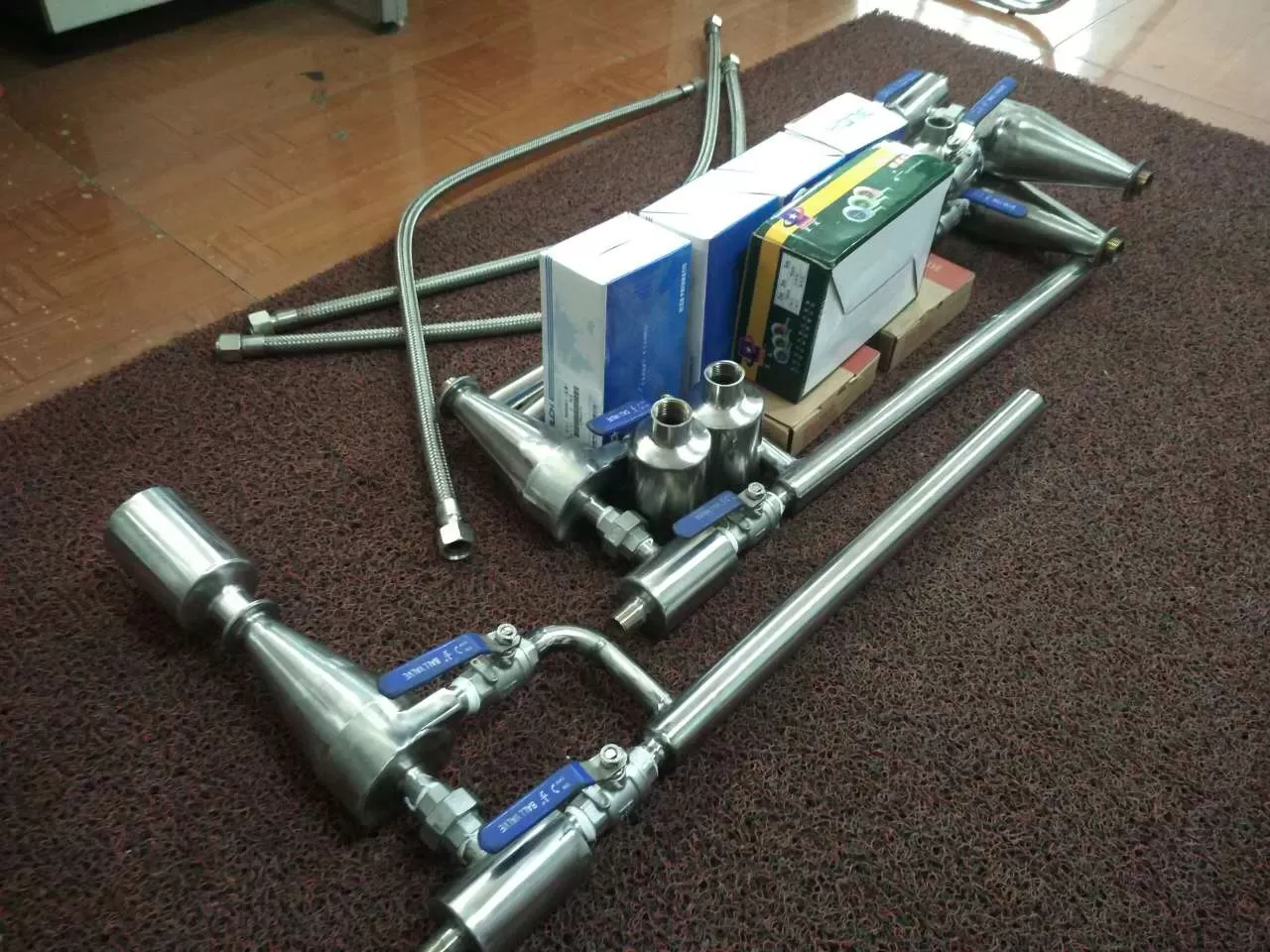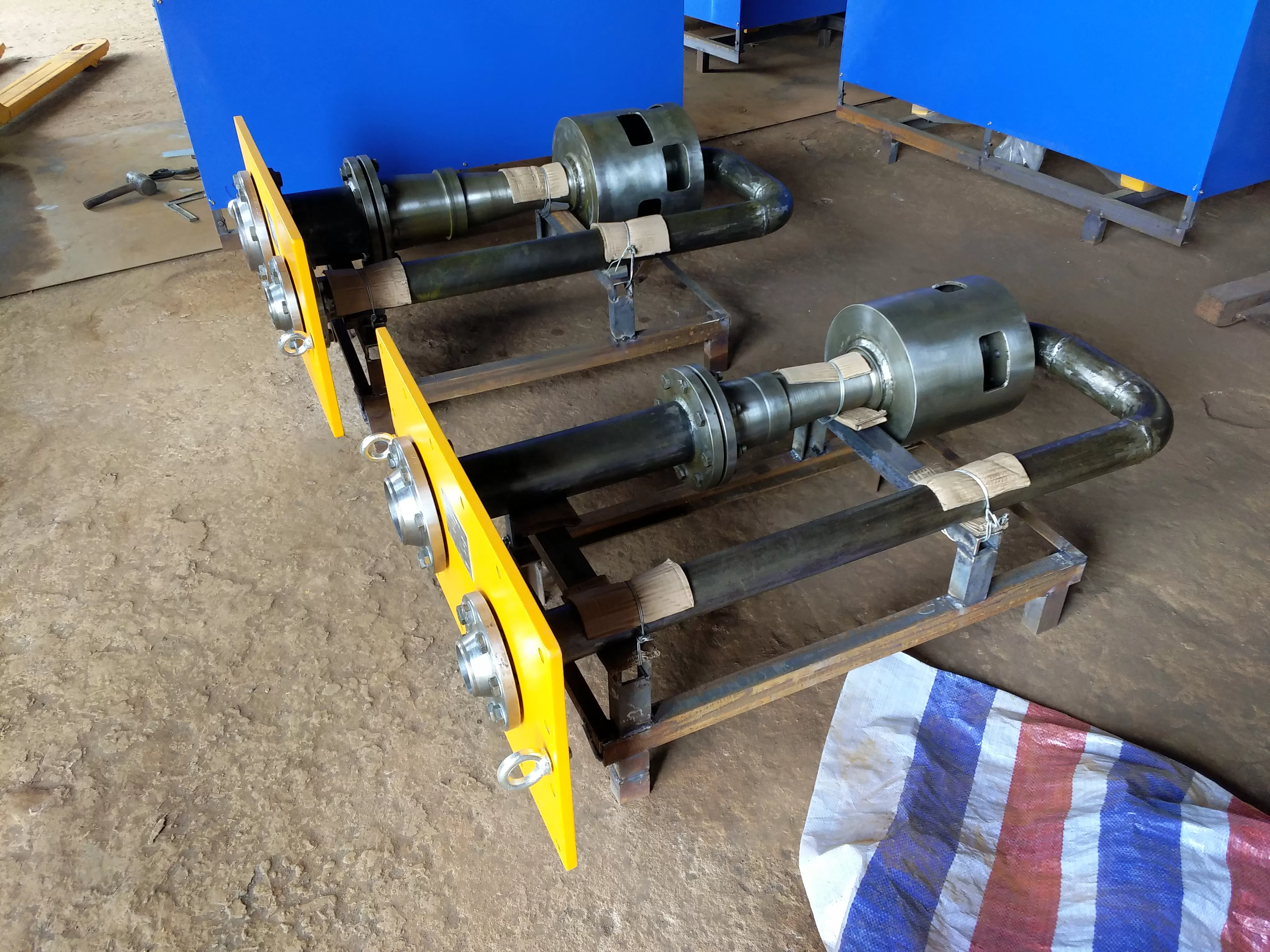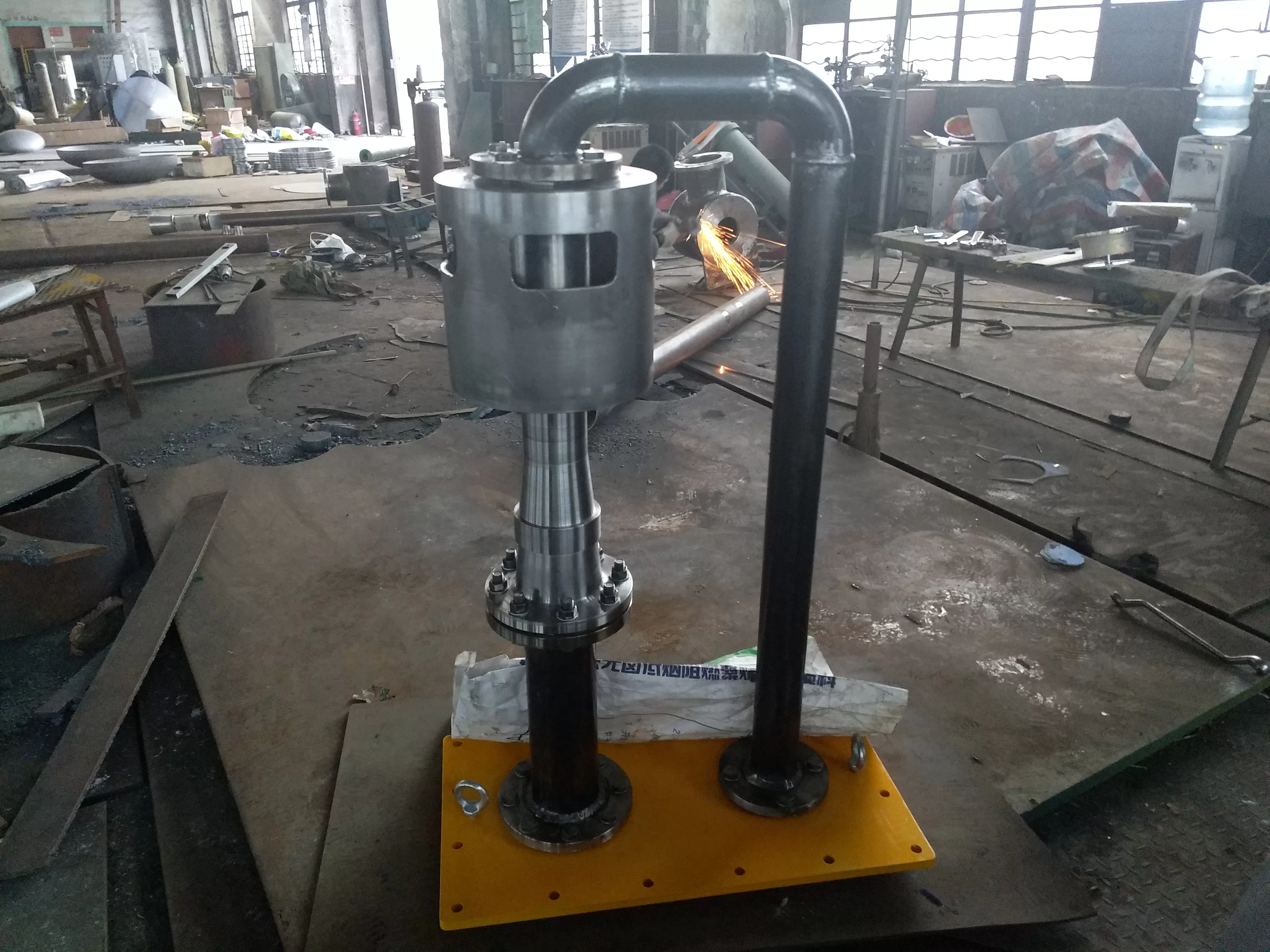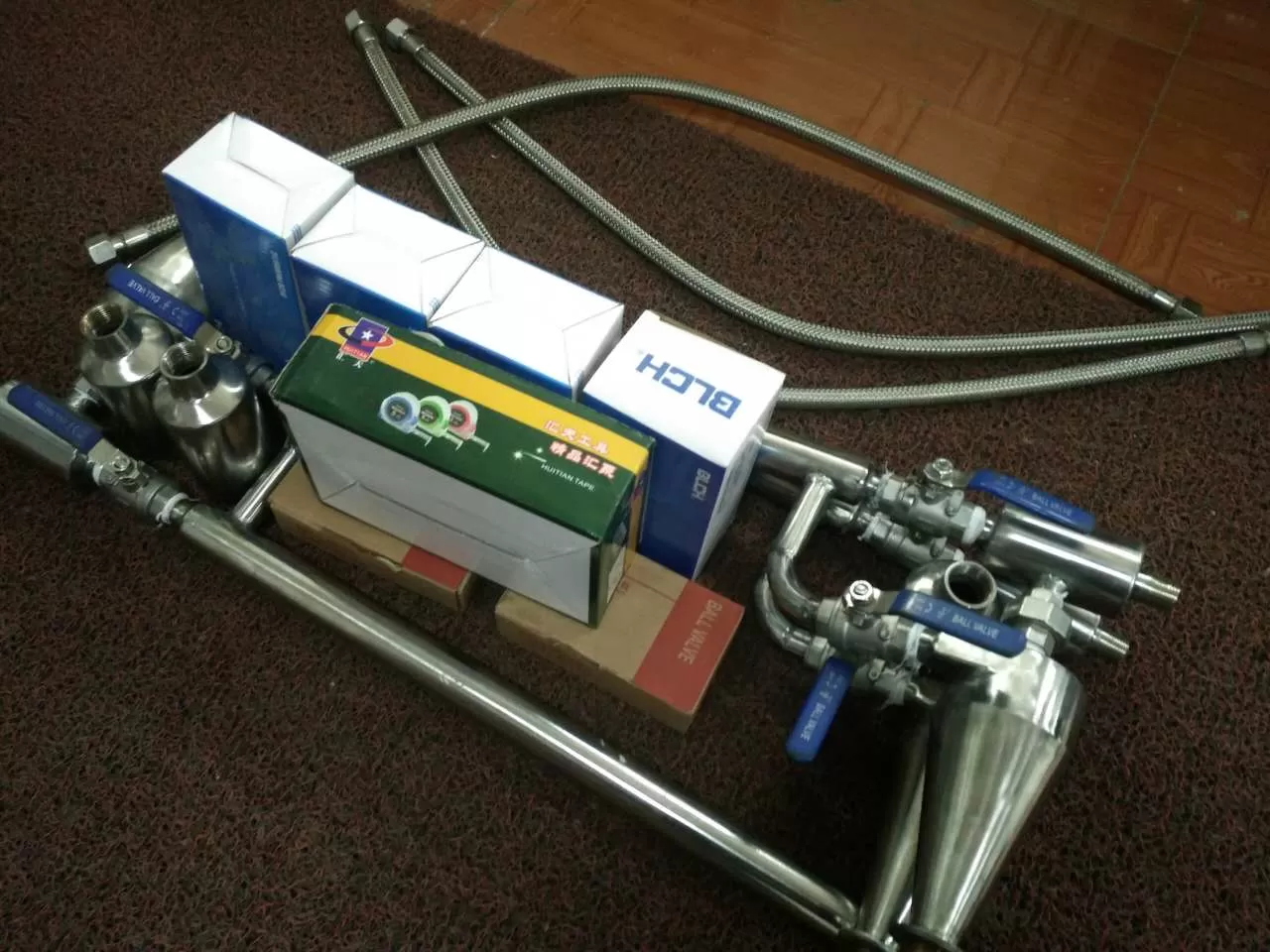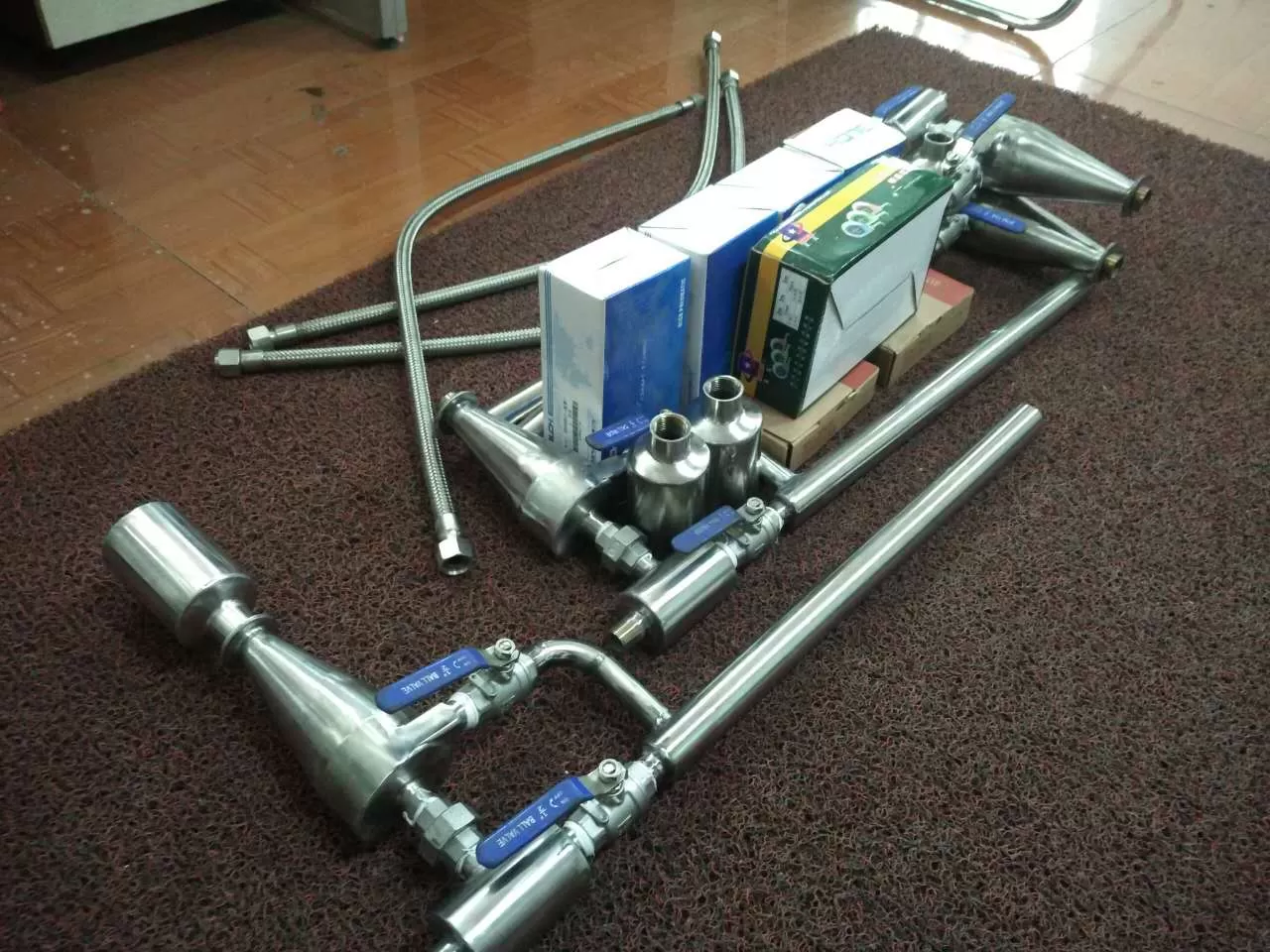Introduction to atmospheric rotary membrane deaerator:
Deaerator is one of the key equipment in the production of supporting boilers and heating systems. Atmospheric rotary membrane deaerator (Also known as membrane deaerator or low-pressure rotary membrane deaerator, it is a type of thermal deaerator that uses a steam turbine to extract steam to heat the boiler feedwater to the saturation temperature at the corresponding deaerator working pressure, remove dissolved oxygen and other gases in the feedwater, prevent and reduce corrosion of the boiler feedwater pipe, economizer, and other auxiliary equipment. It can be used for constant pressure, sliding pressure, and other modes of operation, and has stable operation, high deaeration rate, adaptability, etc.) Deoxygenation for various types of power systems - boilers, industrial boiler feedwater, and thermal power plant feedwater.
Standard for atmospheric rotary membrane deaerator:
Deaerator is one of the key equipment in boilers and heating systems. The severe losses caused by oxygen corrosion on boiler feedwater pipelines, economizers, and other ancillary equipment every year have attracted increasing attention from the Ministry of Electric Power. As a result, the Ministry of Electric Power has issued GB1576-2001 Industrial Boiler Water Quality Standards and the Safety Technical Supervision Regulations for Power Plant Deaerator, proposing departmental standards for the oxygen content of deaerator, The oxygen content in the feed water of the low-pressure deaerator should be less than 15 цɡ/ L. The oxygen content in the feedwater of the high-pressure deaerator should be less than 7 цɡ/ L.
Atmospheric rotary membrane deaerator, with the following features:
1: High deoxygenation rate, qualified rate of oxygen content in feedwater. (Oxygen content in deaerator feedwater ≤ 12) цɡ/ L. Fully meet the standards issued by the Ministry of Electric Power)
2: Stable operation, vibration. It is suitable for negative pressure start and sliding pressure operation, reducing the manual and complicated adjustment operations of start and operation.
3: Adaptable, not demanding on water quality and temperature, and capable of operating at around 30% output, thus eliminating the need for heaters and saving equipment investment scale.
4: The exhaust steam volume is less than 0.1% of the inlet water volume, and there is no need to add an exhaust cooler. This simplifies the equipment, reduces heat consumption, and consumes one-third less energy than other types of thermal deaerator with the same output.
Working principle of atmospheric rotary membrane deaerator and technical transformation of deaerator;
The atmospheric rotary membrane deaerator is mainly composed of two major components: the deaeration tower head, the deaeration water tank, and the connecting and external parts. The main component of the deaerator (deaeration tower head) is composed of a shell, a type of rotary membrane (membrane lifting pipe), a water spray grate, and a heat storage packing liquid vapor network. Below, we will introduce the structure principle of the deaeration tower head
1. Shell: It is made by welding the cylinder body and stamped elliptical head The small and low pressure deaerator is equipped with a flange connection between the upper and lower parts for assembly and maintenance purposes, while the high pressure deaerator is equipped with a manhole for maintenance purposes
2. Rotating film unit: composed of water chamber, steam chamber, rotating film tube, condensate pipe, supplementary water pipe, and primary steam inlet pipe
Condensed water, chemical make-up water, and water are sprayed out in a spiral shape at a fixed angle through a rotary membrane reactor to form a water film skirt, which exchanges heat with the heating steam introduced by the secondary heating steam pipe to form secondary deoxygenation. The feedwater is heated to a saturation temperature of 2-3 ℃ near the working pressure of the deoxygenator through a sprinkler grate and the rising secondary heating steam, and undergoes coarse deoxygenation- Generally, this rotary membrane can remove about 90-95% of the oxygen content in the feedwater
3. Water shower grate: It is made of several layers of staggered angle shaped steel, and the water supply through rotary membrane and coarse deoxygenation is distributed here for secondary distribution, falling evenly in a rain like manner onto the liquid vapor network installed below it
4. Heat storage packing liquid vapor network: It is composed of spaced flat steel strips and cylindrical bodies, with stainless steel wire mesh installed at a fixed height inside. The water supply is fully in contact with the secondary steam here, heated to saturation temperature and subjected to degree deoxygenation. The low-pressure atmospheric rotary film deaerator -10ug/L and high-pressure deaerator -5ug/L (ministerial standards are 15ug/L and 7ug/L respectively)
5. The deoxygenated water in the water tank is collected into the lower container of the deaerator, which is the water tank. The deaeration water tank is equipped with a scientifically designed strong heat exchange and reboiling device. This device has strong heat exchange, quickly increases water temperature, deoxygenates, reduces water tank vibration, and lowers mouth pressure, improving the use of equipment and ensuring the safe and reliable operation of equipment
Working principle of atmospheric rotary membrane deaerator:
There are fundamental differences in energy between atmospheric rotary film deaerator and other types of thermal deaerator such as spray packing type and spray pan type. The key lies in the heat and mass transfer mode of steam and water caused by its spray junction
Condensed water and supplementary water enter the water chamber of the internal rotary membrane reactor in the deaeration head, and are sprayed diagonally from the small hole of the rotary membrane tube to the inner hole under a certain pressure difference, forming a jet. Due to the inner hole being filled with rising heating steam, the water is sucked in by the jet movement, which has a suction effect (experimental results show that the jet movement has a suction effect). In a short period of time, a violent combined heating effect is generated on a small stroke, and the water temperature is greatly increased, The rotating water continues to spiral downwards along the inner wall of the rotary membrane tube, forming a layer of turbulent water film skirt (the critical Reynolds number of water decreases rapidly during rotational flow, resulting in turbulent rolling). At this time, the water in the turbulent state undergoes heat and mass transfer, and the water temperature reaches saturation temperature. Oxygen is separated, and since the rotating water flow is basically rotating tightly against the tube wall, a vapor gas channel is formed between the rotary membrane tubes, and there is no dead zone for gas flow, Due to the arbitrary diffusion of oxygen inside the inner hole, the non condensable gas precipitated is rapidly discharged and can only be discharged into the atmosphere with the rising steam from the exhaust pipe (although the deaerator heats water and separates oxygen, the oxygen ratio is greater than the heating steam, and some oxygen is carried into the water tank by the flowing water, which is also one of the reasons for poor deaeration results)
The feed water that undergoes rotary membrane coarse deoxygenation and the drain water introduced by the drain pipe are combined here for secondary distribution, falling evenly in a rain like manner onto the liquid vapor network installed below it, and then undergoing partial deoxygenation before flowing into the water tank. The atmospheric rotary membrane deaerator is less than 12u ɡ/ L Yuan - Departmental Standard (Departmental Standard High Voltage 7u) ɡ/ L. Low pressure 15u ɡ/ L)
Due to the turbulent flow of water and sufficient heat exchange surface area in the operation of the rotary membrane deaerator, the heat and mass transfer results in small exhaust volume (i.e., the economic benefits brought by small energy loss are also considerable), and the excess generated by deaeration can enable the deaerator to operate under load (30% of rated output) or fully replenish water at low water temperature.
Renovation of atmospheric rotary membrane deaerator:
-At the same time of supplying a complete set of air type rotary membrane high pressure deaerator, we also undertake the technical transformation of the existing water spray tray deaerator, spray packing deaerator and other deaerating equipment,
There are several specific aspects:
1. The renovation cost is low, about half of the cost of replacing the deaerator
2. Progress - Easy to process and install, deaerator with output below 200T/H- It is usually completed within seven days
3. Stable operation, - vibration
4. Adaptation -, not demanding on water quality, temperature, and pressure requirements
The following data is required for the technical transformation of the - type deoxygenation equipment:
1: The output of the existing deaerator
2: The height, cylinder diameter, and wall thickness of the existing deaerator
3: The working pressure and temperature of each feedwater of the existing deaerator
4: Heating steam parameters (pressure, temperature, flow rate)
5: The on-site installation diagram of the existing deaerator
Specification, model, and technical parameters of atmospheric rotary membrane deaerator:
型號 | 額定出力 T/H | 水箱有- 容積(m) | 工作溫度 (℃) | 工作壓力 Mpa | 進水溫度 (℃) | 設計溫度 (℃) | 設備-量 (Kg) |
DCM-10 | 10 | 5 | 104 | 0.02 | 20 | 250 | 3680 |
DCM-20 | 20 | 10 | 104 | 0.02 | 20 | 250 | 4570 |
DCM-35 | 35 | 15 | 104 | 0.02 | 20 | 250 | 5355 |
DCM-40 | 40 | 20 | 104 | 0.02 | 20 | 250 | 6150 |
DCM-50 | 50 | 22 | 104 | 0.02 | 20 | 250 | 8250 |
DCM-75 | 75 | 25 | 104 | 0.02 | 20 | 250 | 9445 |
DCM-85 | 85 | 35 | 104 | 0.02 | 20 | 250 | 12200 |
DCM-100 | 100 | 40 | 104 | 0.02 | 20 | 250 | 14805 |
DCM-130 | 130 | 45 | 104 | 0.02 | 20 | 250 | 16250 |
DCM-150 | 150 | 50 | 104 | 0.02 | 20 | 250 | 17500 |
DCM-300 | 300 | 75 | 104 | 0.02 | 20 | 250 | 23885 |
